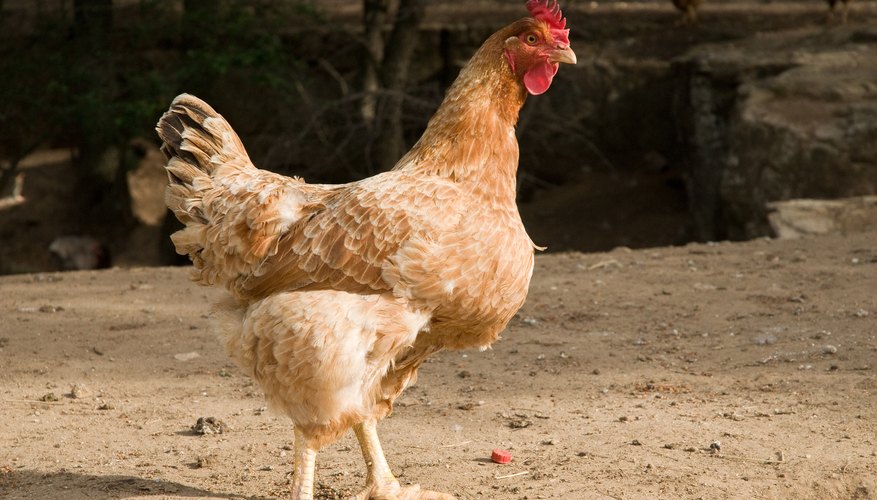Adaptation is the evolutionary process that allows an animal or plant to become better suited to its environment. Over many generations, an organism may gain a new feature or lose an ancestral one. Some structures may lose their original function and become vestigial. Chickens were first domesticated around 8,000 years ago from the red jungle fowl. The characteristics we see on chickens today reflect both the lifestyle of the wild red jungle fowl and the differences brought about through domestication and selective breeding.
Beak
Birds' beaks are adapted to their diets. The modern, domesticated chicken is fed a standard diet of grains, but by nature it is a forager that will eat a wide variety of foods. It has therefore developed a short, strong pointed beak that will allow it to pick up fruit, seeds and even insects from the ground. Its feet are also adapted for this diet and method of collecting food. It has nail-like toes that it uses to scratch the earth.
- Birds' beaks are adapted to their diets.
- It has therefore developed a short, strong pointed beak that will allow it to pick up fruit, seeds and even insects from the ground.
Plumage
Chickens in general are heavily feathered, which provides good insulation against the cold. However, some types of chicken have adapted, often through selective breeding, to live in different climates. Malays and Shamos, for example, that were bred in Asia, may suffer in cold weather.
Wings
Chickens are flightless birds, although they can manage prolonged and high jumps. They are also surprisingly fast on the ground. Like other birds, their skeletons have adapted to support flight and relatively fast movement. Their bones are honeycombed, providing a light but rigid frame. Their keratin beaks also are much lighter than a bony jaw with teeth.
- Chickens are flightless birds, although they can manage prolonged and high jumps.
- Their keratin beaks also are much lighter than a bony jaw with teeth.
Sounds
Chickens are sociable birds, although the males can be territorial. They have developed a number of vocalisations as a result of this. Roosters will crow to alert other males to the fact that they may be encroaching on their territory. Hens will cluck after laying an egg and also to gather their chicks around them.
- Chickens are sociable birds, although the males can be territorial.
- Hens will cluck after laying an egg and also to gather their chicks around them.
